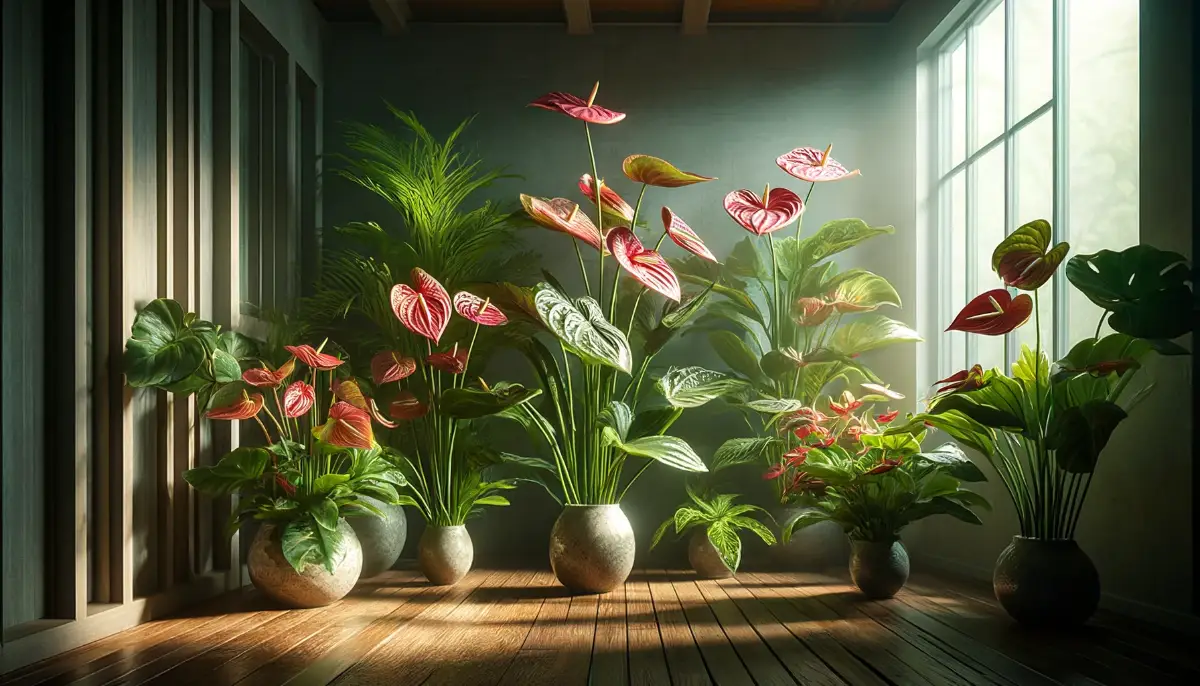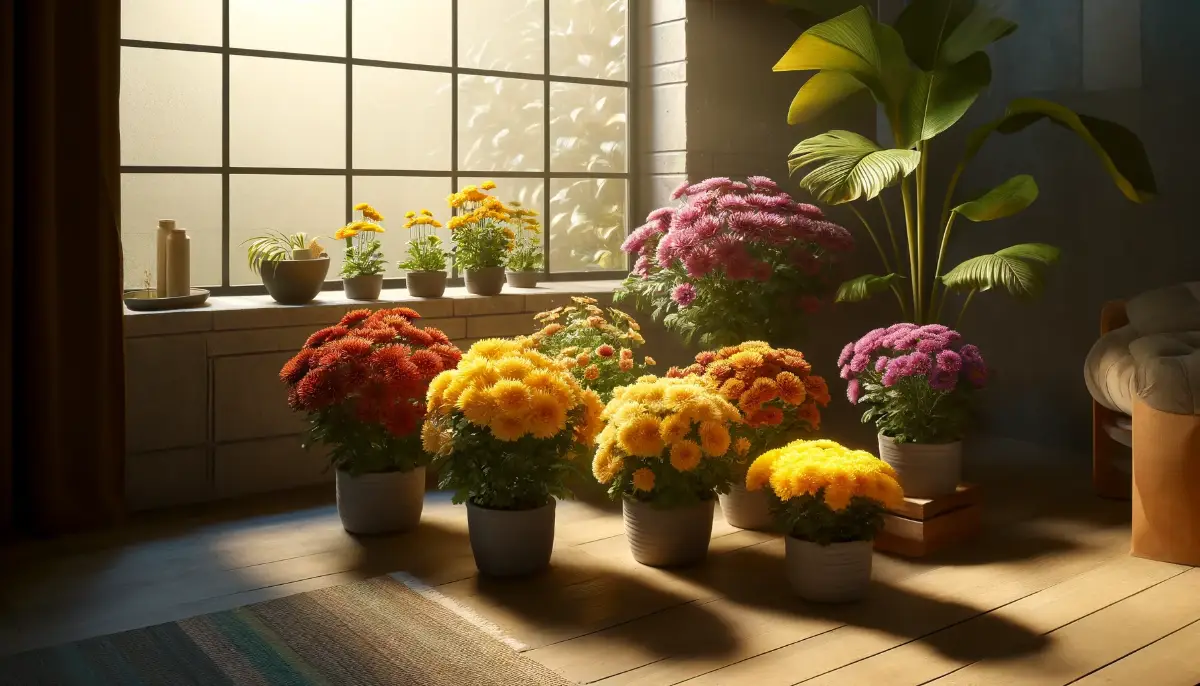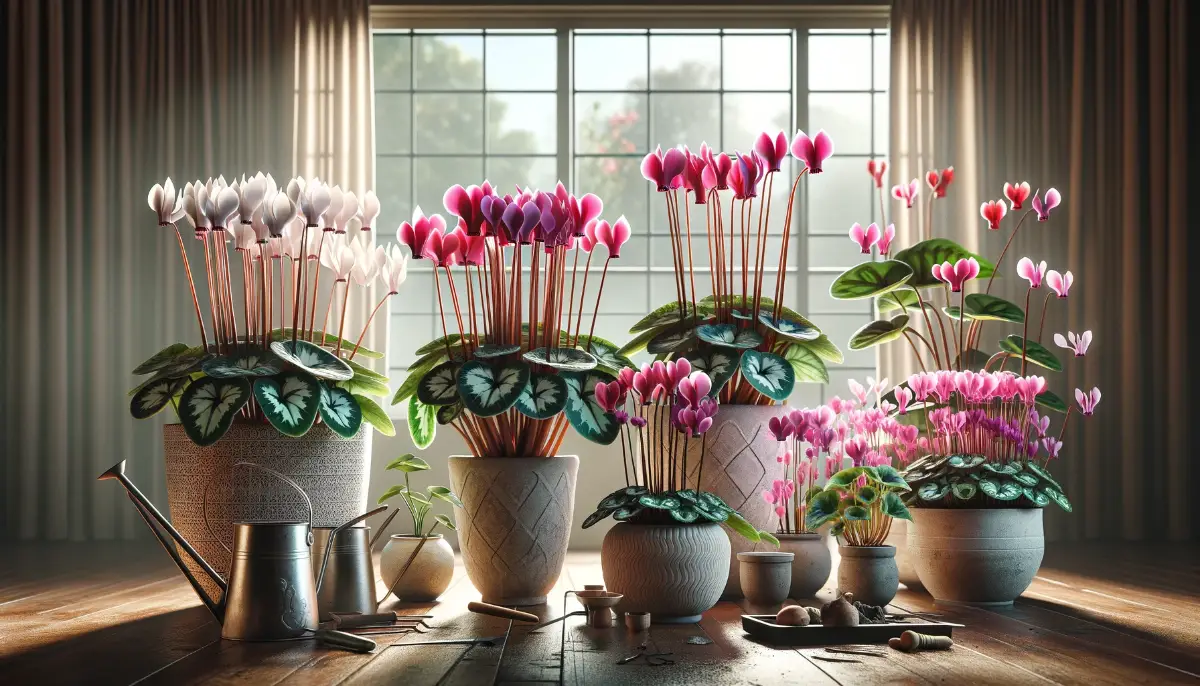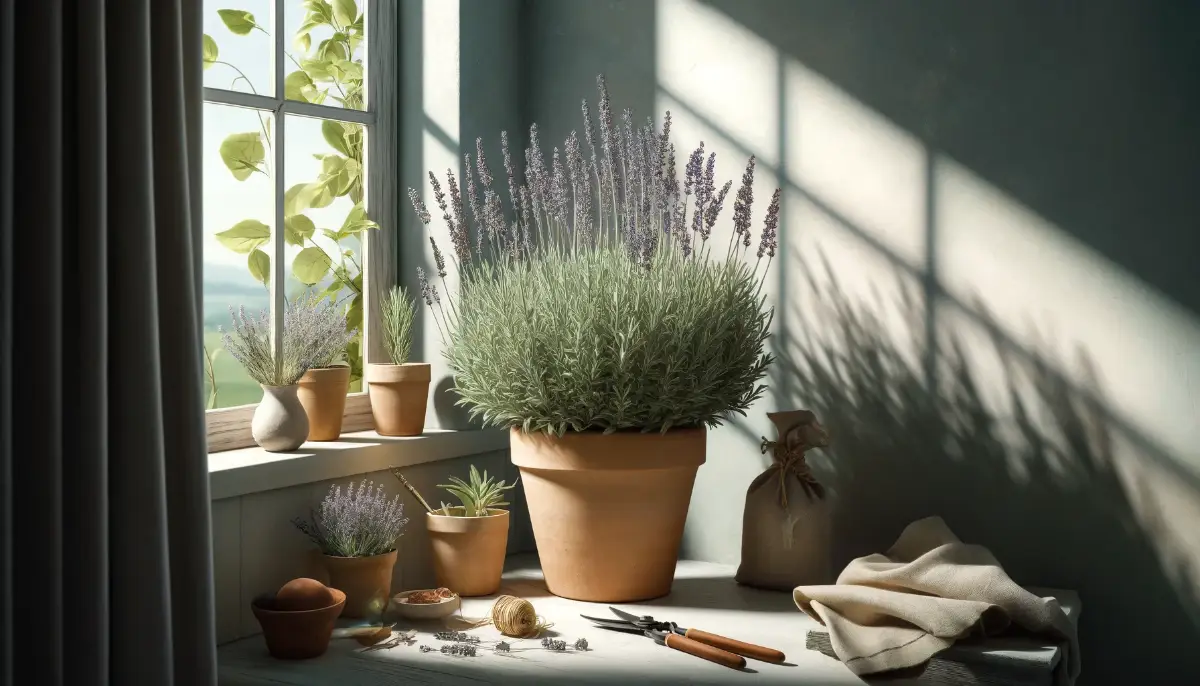Anthuriums, often celebrated for their striking, heart-shaped spathes, have captivated plant enthusiasts worldwide, making them a cherished choice among indoor plants. These tropical beauties, originating from the rainforests of Central and South America, not only add a splash of color to home interiors but are also admired for their relatively easy care requirements and their ability to bloom almost year-round under the right conditions.
As they thrive in warm, humid environments mimicking their native habitat, understanding the precise balance of light, water, and humidity is crucial. This ensures that these alluring plants not only survive but flourish indoors, bringing a continuous display of their glossy leaves and vibrant flowers.
Proper care can make anthuriums a long-lasting and rewarding addition to any plant collection, enhancing living spaces with their exotic charm.
Ideal Growing Conditions for Anthuriums
Light and Temperature
Anthuriums thrive in environments that mimic their natural tropical habitat. They require bright, indirect light to promote growth and bloom. Direct sunlight should be avoided as it can scorch their leaves. Ideal temperatures for anthuriums range from 75º to 85º Fahrenheit during the day. At night, they prefer slightly cooler temperatures between 70° to 75° Fahrenheit.
Humidity and Air Quality
High humidity is crucial for anthuriums, reflecting their rainforest origins. These plants flourish in environments with at least 60% humidity. Regular misting, a pebble tray, or a humidifier can help maintain the required humidity levels. Additionally, ensure the area is well-ventilated to prevent the buildup of mold or pests on the moist leaves.
Soil and Drainage
The soil for anthuriums should be well-draining yet capable of retaining slight moisture. A mixture of peat, perlite, and pine bark is often recommended. This helps mimic the loose, fertile soil of their natural growing conditions. Ensuring good drainage reduces the risk of root rot, which can be a common issue if the soil stays too wet.
Environmental Stability
Anthuriums prefer a stable environment without frequent changes. Avoid placing them in drafty areas or near vents that can cause sudden temperature fluctuations. Consistent conditions are key to keeping anthuriums healthy and stress-free.
Watering Practices for Anthuriums
Frequency and Amount
Anthuriums prefer their soil to be consistently moist, but not waterlogged. Watering should be done when the top inch of the soil feels dry to the touch. This typically means watering once a week, but frequency should be adjusted based on temperature, light levels, and humidity. During the active growing season (spring and summer), anthuriums may need more frequent watering, while in the cooler months, watering frequency should be reduced.
Techniques
Use lukewarm water to avoid shocking the plant’s roots, which can be sensitive to temperature changes. Water thoroughly until it runs freely from the drainage holes. This ensures that the entire root system is hydrated. Allow any excess water to drain completely, as standing water in the pot can lead to root rot and other fungal issues.
Water Quality
Tap water, especially if it is hard or heavily chlorinated, can build up salts in the soil which may harm the plant. If possible, use rainwater or distilled water for your anthuriums. If using tap water, let it sit overnight to allow chlorine to evaporate and to come to room temperature before using.
Signs of Improper Watering
Overwatering is one of the most common issues with anthurium care, leading to root rot and yellowing leaves. Underwatering, though less common, can cause the leaves to droop and brown at the tips. Monitoring your plant’s response to watering routines and adjusting as necessary is key to maintaining its health.
Read more: How to mist your indoor plants
Organic Fertilization Practices for Anthuriums
Anthuriums require a balanced approach to fertilization, focusing on phosphorus to encourage blooming and maintaining their vibrant spathes. Organic fertilizers are preferred for their gradual nutrient release and soil conditioning properties. They require less frequent application and reduce the risk of chemical burn to the plant’s roots compared to synthetic fertilizers.
Types of Organic Fertilizers
- Fish emulsion: A fast-acting liquid fertilizer that is rich in nitrogen, phosphorus, and potassium. It’s suitable for the growth phase of anthuriums.
- Bone meal: High in phosphorus, bone meal supports flowering and root development. It is slow-releasing, making it a stable source of nutrients.
- Seaweed extracts: Rich in micronutrients and natural growth hormones, seaweed extracts boost overall plant health and disease resistance.
Application Schedule
Fertilize anthuriums with organic options every two months during the growing season (spring and summer). Reduce the frequency in the autumn and winter months to every three to four months, as the plant’s growth slows down. Always follow the product’s instructions for dilution and application rates to avoid over-fertilization, which can lead to nutrient burn and poor plant health.
Benefits of Organic Fertilizers
Organic fertilizers improve the soil structure and increase its ability to hold water and nutrients over time. They are also environmentally friendly and reduce the risk of chemical buildup in the soil, which can be detrimental to both the plant and the ecosystem. Moreover, they help maintain a balanced soil pH, which is crucial for anthuriums’ health.
Potting and Repotting Tips for Anthuriums
Choosing the Right Pot
Anthuriums require pots that promote good drainage to prevent water from accumulating around the roots, which can cause root rot. Choose a pot with drainage holes and consider materials like terra cotta or plastic depending on your watering habits. Terra cotta pots are porous and help evaporate excess moisture quickly, while plastic pots retain moisture longer.
Potting Mix
The ideal potting mix for anthuriums should be light and airy to allow roots to breathe and water to drain efficiently. A recommended mix includes peat moss, perlite, and pine bark. This combination helps mimic the natural, well-draining environment of anthuriums’ native tropical forest floor.
When to Repot
Anthuriums typically need repotting every two to three years, or when the roots have outgrown the pot. Signs that indicate it’s time to repot include roots growing through the drainage holes, slower growth, or the soil drying out faster than usual.
Repotting Steps
Preparation: Water the plant a day before repotting to minimize stress and ease the removal process.
Removing the Plant: Gently remove the plant from its current pot, taking care not to damage the roots. Trim any dead or excessively long roots to encourage healthier growth.
Pot Selection: Choose a new pot that is slightly larger than the current one—usually about 1 to 2 inches wider in diameter.
Refilling the Pot: Place a layer of fresh potting mix at the bottom of the new pot, then position the anthurium so that it’s at the same depth as before. Fill around the roots with more potting mix and gently firm down to eliminate air pockets.
Aftercare Following Repotting
Water the newly potted anthurium thoroughly and place it in a location with indirect light. Avoid fertilizing immediately after repotting to allow the plant to settle in and reduce the risk of burning the roots with a sudden influx of nutrients.
Propagation Techniques for Anthuriums
Methods of Propagation
Anthuriums can be propagated through several methods, the most common being division and stem cuttings.
Division:
- This method involves separating the plant into smaller sections, each with its own roots. It’s typically done during repotting. Carefully remove the plant from its pot and gently divide the root ball into sections, ensuring each new plant has a portion of roots.
- Best performed in the spring, this method allows for rapid establishment in the growing season.
Stem Cuttings:
- Choose a healthy stem with two to three leaves and, if possible, one or two aerial roots. Cut just below a node using a clean, sharp knife or scissors.
- The cutting can be rooted in water or directly into a potting mix. If using water, change it every few days until roots develop, then transplant it to soil.
Preparing Cuttings
- When preparing cuttings, use a rooting hormone to enhance root development. This can be applied to the cut end of the stem before planting in soil or water.
- Ensure the tools used for cutting are sterilized to prevent the spread of disease.
Environmental Conditions for Propagation
- Maintain high humidity and warm temperatures to support the rooting process. A mini greenhouse or a plastic bag can be used to create a humid, enclosed environment.
- Keep the new plantings in indirect sunlight until roots are well established and new growth appears.
Aftercare for Propagated Plants
Once rooted, anthurium cuttings require similar care to mature plants. Gradually acclimate them to less humid conditions to avoid shock and ensure they are receiving adequate light without direct exposure to harsh sunlight.
Pests, Common Issues and solutions
Common Pests
Anthuriums may encounter several pests, which can affect their health and appearance:
Aphids: These small insects suck sap from the leaves, causing them to yellow and distort. Aphids can be washed off with a strong stream of water or treated with insecticidal soap.
Spider Mites: These tiny pests are hard to see but can cause significant damage by creating fine webs and speckling leaves with yellow spots. Increase humidity around the plants to deter spider mites, or use a miticide if infestation persists.
Mealybugs: These white, cottony pests cluster in leaf axils and on the undersides of leaves, sucking plant juices. Remove them manually with a cotton swab dipped in alcohol or apply a systemic insecticide.
Read more: Organic Methods to Control Mealybug Infestations
Scale: Hard to spot, these pests attach themselves to stems and leaves, sucking sap and weakening the plant. They can be controlled with horticultural oil or insecticidal soap .
Common Issues
Apart from pests, anthuriums can suffer from several cultural issues:
Yellowing Leaves: Often a sign of overwatering but can also indicate nutrient deficiency. Ensure the plant is not sitting in water and consider applying a balanced, water-soluble fertilizer.
Brown Leaf Tips: Typically caused by low humidity or salt build-up in the soil. Increase humidity levels and flush the soil periodically to remove excess salts.
Root Rot: This is usually the result of overwatering or poor drainage. To prevent root rot, use a well-draining potting mix and water only when the top inch of soil is dry.
Solutions
Implementing the right care strategies can prevent and resolve these issues:
- Proper Watering: Water only when the top inch of soil feels dry. Use lukewarm water to avoid shocking the plant’s roots.
- Adequate Humidity: Maintain high humidity around the plant, especially during dry months. Use a humidifier or a pebble tray to add moisture to the air.
- Regular Monitoring: Check your plant regularly for signs of pests or disease. Early detection makes treatment more effective and lessens the chance of spread.
FAQs about Anthurium
How often should I water my anthurium?
Water when the top inch of soil feels dry, typically once a week, but adjust based on humidity and temperature conditions.
What type of light is best for anthuriums?
Anthuriums thrive in bright, indirect sunlight. Avoid direct sun exposure, which can burn the leaves.
Do anthuriums need special fertilizer?
Use a phosphorus-rich fertilizer to encourage blooms. Fertilize every two months during the growing season and less frequently in the winter.
How do I repot an anthurium?
Repot every two to three years in spring using a pot that is slightly larger than the current one. Use a well-draining potting mix.
Can anthuriums be grown outdoors?
In non-tropical climates, anthuriums are best kept indoors. In tropical environments, they can be grown outdoors in shaded areas.
Why are my anthurium’s leaves turning yellow?
Yellow leaves can be caused by overwatering, under-watering, or nutrient deficiencies. Adjust water and fertilizer accordingly.
How can I increase humidity for my anthurium?
Use a humidifier, place a water tray near the plant, or mist the leaves regularly to increase humidity.
What are the common pests that affect anthuriums?
Watch out for aphids, spider mites, and mealybugs. Treat infestations with insecticidal soap or neem oil.
How do I encourage my anthurium to bloom?
Ensure adequate light, humidity, and use a phosphorus-rich fertilizer. Also, keep the plant in a warm environment.
Is anthurium toxic to pets?
Yes, anthuriums are toxic to cats and dogs. The plant can cause mouth irritation and gastrointestinal upset if ingested.










